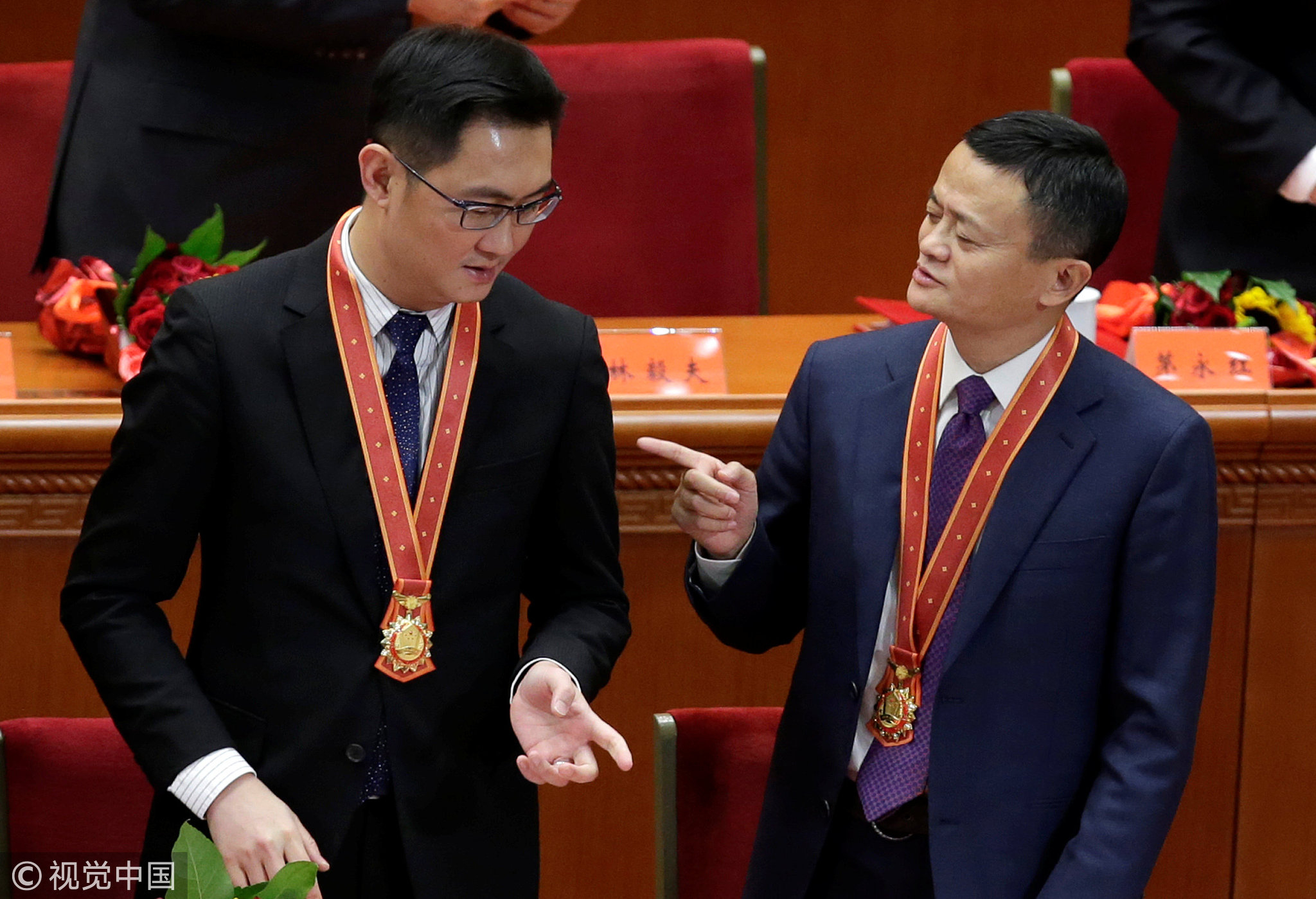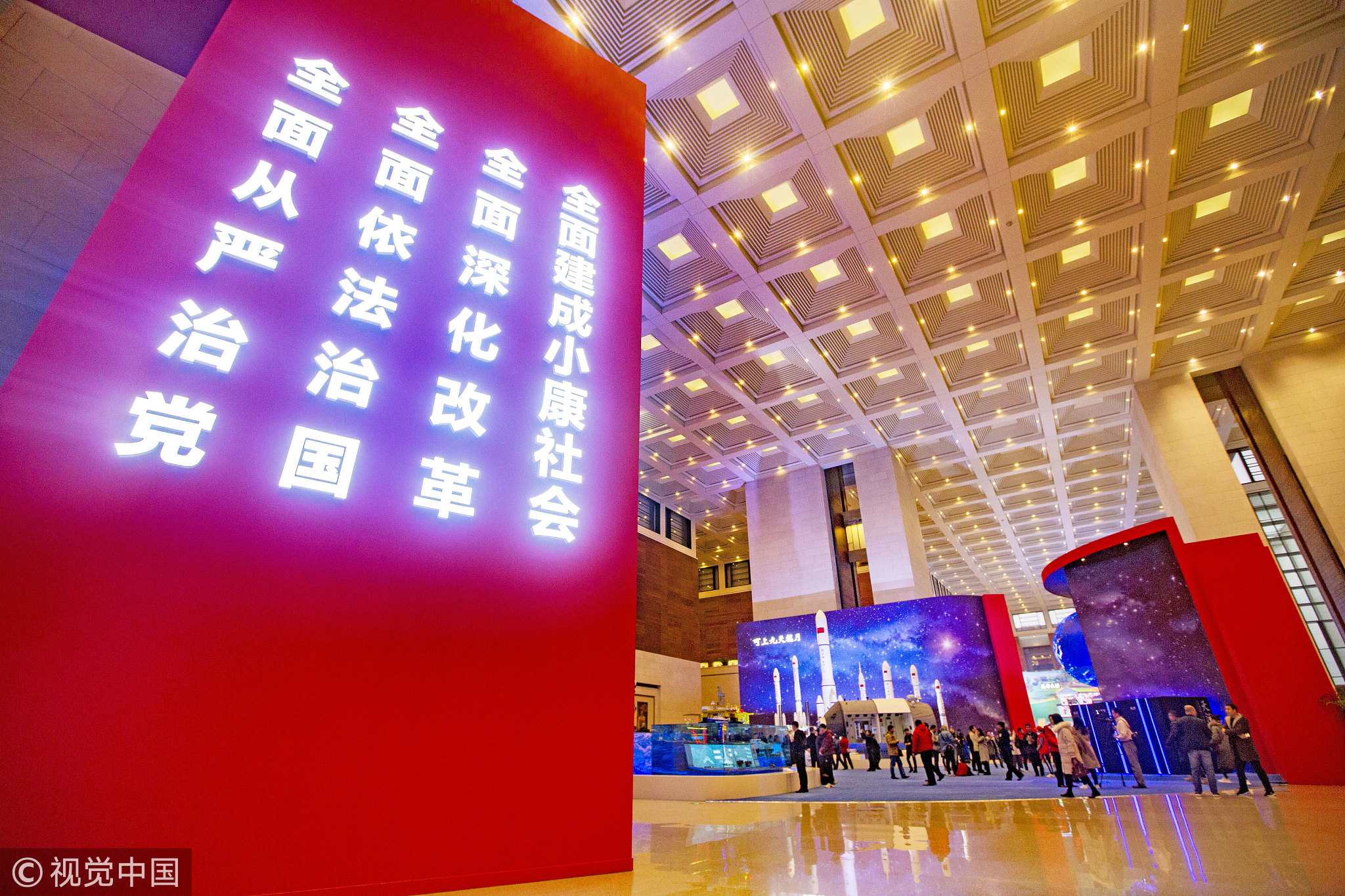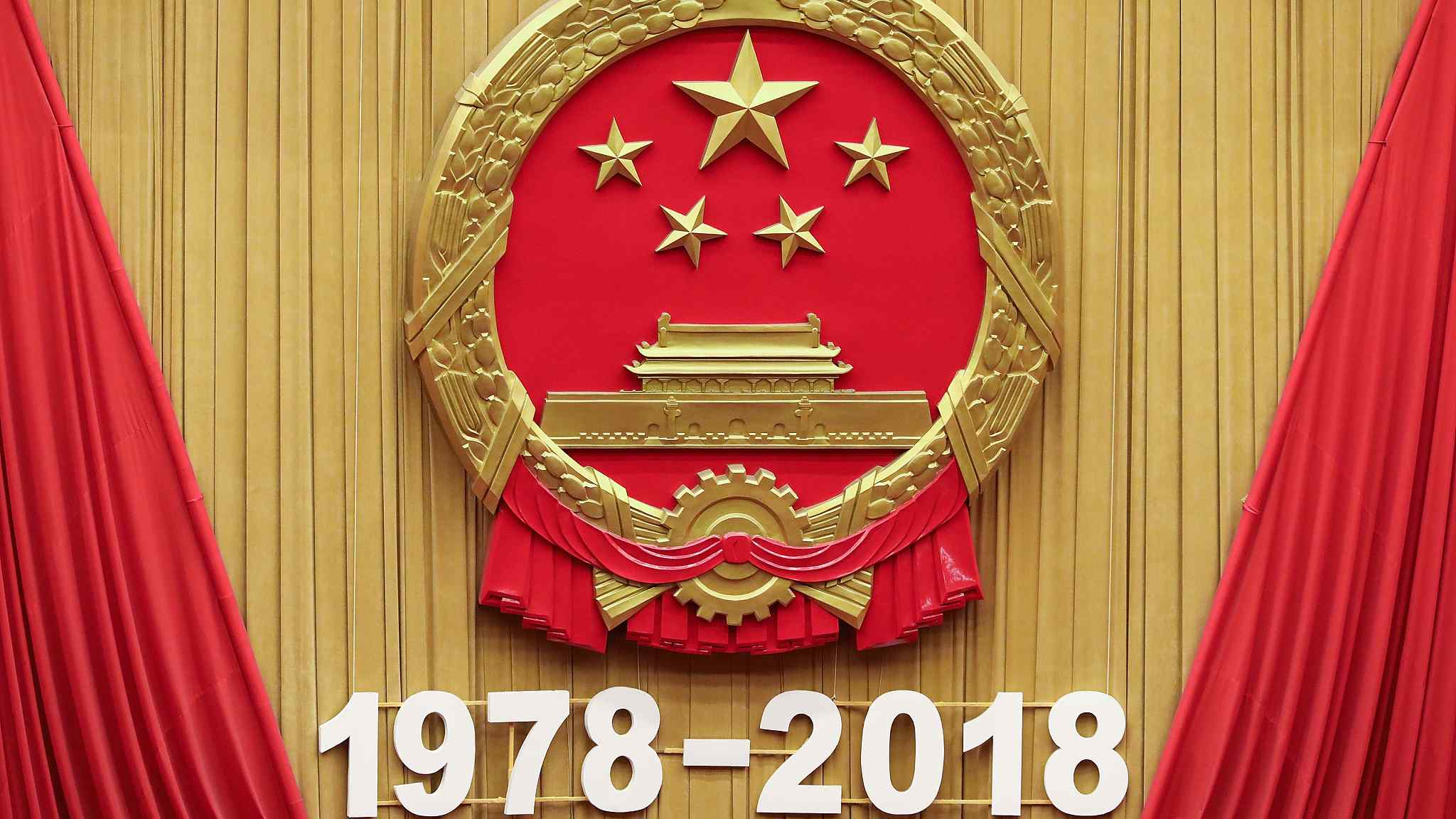Editor's note: Zhu Zheng is an assistant professor at the Law School with China University of Political Science and Law. The article reflects the author's opinion, and not necessarily the views of CGTN.
A grand commemoration was held on Tuesday in Beijing to mark the 40th anniversary of China's reform and opening-up. While the feast can be perceived in a variety of ways, it is important to note that China's profound transformation would not have taken place if there were not a Constitution giving the green light to the reform, and sometimes set out the course.
Indeed, the current 1982 PRC Constitution that was usually tagged “reform constitution” has helped to inculcate popular consciousness for human rights protection and the rule of law, which provided impetus to the reform, and the reform, in turn, reinforced the implementation of the Constitution.
In this light, it is fair to say that the reform was brought forward and carried out in conjunction with the enacting and revising of the 1982 Constitution, albeit with twists and turns.

An image of the former president of the International Olympic Committee (IOC) Juan Antonio Samaranch is displayed on a screen during a celebration meeting marking the 40th anniversary of China's "reform and opening up" policy at the Great Hall of the People in Beijing on December 18, 2018. /VCG Photo
An image of the former president of the International Olympic Committee (IOC) Juan Antonio Samaranch is displayed on a screen during a celebration meeting marking the 40th anniversary of China's "reform and opening up" policy at the Great Hall of the People in Beijing on December 18, 2018. /VCG Photo
On the one hand, the 1982 Constitution that has often been considered a “good constitution” as opposed to its 1975 and 1978 precursors gives enshrined to innovative ideas and universal values, which steered the country from a nation once plagued with ideological ossification and economic backwater to the second largest economy in the world.
For instance, the 2004 Amendment to the 1982 Constitution promised that “the state preserves and respects human rights,” which committed the state to the human rights protection and universal values.
Also, the erroneous idea of “class struggle” embedded in the 1975 and 1978 constitutions once prevailed in the Cultural Revolution period was replaced by the pragmatism underpinning the 1982 Constitution. This shift of paradigm is clearly seen in Deng Xiaoping's famous “cat theory,” i.e., no matter if a cat is black or white so long as it catches mice, which denotes that “the sole touchstone for truth is practice.”

Tencent's Chief Executive Officer Pony Ma and Alibaba's Executive Chairman Jack Ma chat at the end of an event marking the 40th anniversary of China's reform and opening up at the Great Hall of the People in Beijing, China December 18, 2018. /VCG Photo
Tencent's Chief Executive Officer Pony Ma and Alibaba's Executive Chairman Jack Ma chat at the end of an event marking the 40th anniversary of China's reform and opening up at the Great Hall of the People in Beijing, China December 18, 2018. /VCG Photo
Speaking of the practice, on the other hand, not all salutary reform practices were unrolled within the constitutional and legal framework. At its earliest stage, for example, some progressive reforms were put in place in the shackles of conservative constitutional parameters under the 1975 and 1978 constitutions, which contained articles that deprive and restrict rather than protect human freedom and property rights.
As a straitjacket, the 1975 and 1978 constitutions gave no blessing to the reform, and if certain seeds of reform were to sow at that particular time, the anachronistic and excessively restrictive constitutional order would have to be broken and abandoned to give room for social and political progress.

On December 16, 2018, the exhibition hall of the National Museum celebrating the 40th anniversary of the reform and opening-up. /VCG Photo
On December 16, 2018, the exhibition hall of the National Museum celebrating the 40th anniversary of the reform and opening-up. /VCG Photo
This is no better seen than in the Xiaogang experiment case, where under the 1978 Constitution parcels of land were supposedly owned by the People's Commune and a member of the People's Commune is only allowed to manage a small quantity of private plot so as to guarantee that the absolute dominance of the collective economy not challenged.
Apparently, the practice of allowing individual peasant household to own land, and the State Council's later calling on all country to duplicate the Xiaogang experiment ran odds with the 1978 Constitution. However, the violation, which was subsequently summarized in theory as a “benign violation paradox,” has generated positive outcomes and heralded a series of reforms which ultimately changed the country as a whole.
In this scenario, it is usually concluded by theorists that the 1982 Constitution is a constitution blowing the trumpet for the reform and making records of the reform at the same time, with the route of innovation mapped out and lessons written down in a timely manner.
In four decades, the reform has completely changed China's outlook and spirit, and the reform and opening-up have much synergy with the Constitution. It is only from the constitutional perspective that the salutary lessons can be more clearly perceived and learned.
(If you want to contribute and have specific expertise, contact us at opinions@cgtn.com.)





